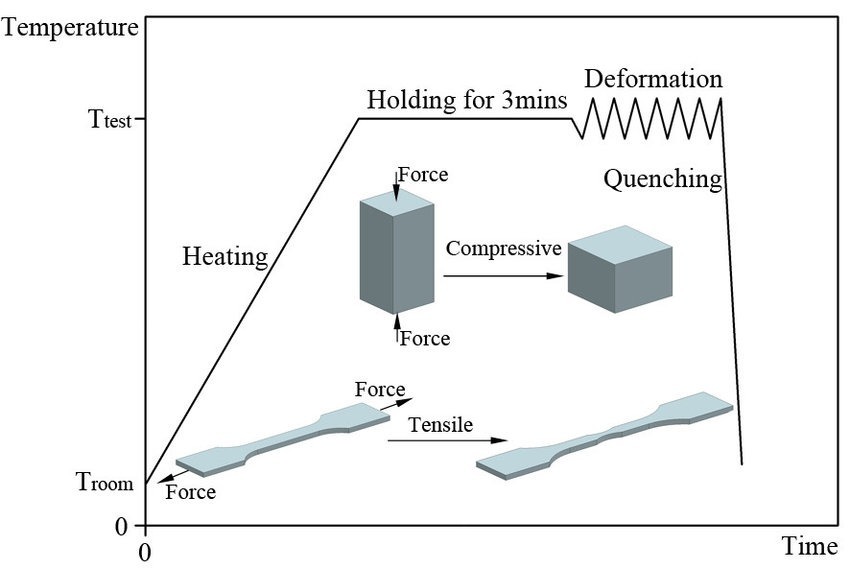Material testing is also essential in the majority of industries. A host of tests can be selected and testing undertaken by the engineers and manufacturers to ensure the response of the materials under pressure. Tensile test and compression test are some well-known tests. The tests help in determining whether a material is strong enough to be subjected to a given use.
This article gives the layman’s account of the two tests. Those will consist of their purpose and method, differences, and importance. At the end, you will appreciate the contributions of these tests in product designing and product safety.
What is a tensile Test?
A tensile test confirms the response of a material when it is pulled in the opposite direction. It shows how much the material could be pulled before it broke. It is also known as a pull test.
In case of a tensile test, a sample is pulled out at the ends. The tensile test machine pulls with force until the points of breakage or deformation are reached. This test teaches us about the strength and elasticity of a material.
The Terms in Tensile Testing:
Tensile Strength: The greatest amount of force that a substance can withstand being pulled.
Yield Point- Yield Point is at which the material begins to deform.
Elongation – the extent of stretching of the material before breaking.
Ordinary Materials Tested:
Metals
Plastics
Rubber
Fibers
What Is a Compression Test?
A compression test determines what happens when a particular material is pushed or forced sideways. It determines the resistance of a material to its compression or crushing.
During this test, a machine applies a load to the material. This is aimed at determining its strength and the amount of pressure it can hold before deforming or breaking.
In Compression Testing Key Terms are:
Compressive: The maximum force that a material can resist before it breaks up.
Deformation- Expansion of shapes by the load
Elastic Limit: The point at which the permanent change of shape does not take place
General test materials:
Concrete
Foam
Wood
Ceramics
Key differences between the tensile and the compression tests.
The two tests are used for different purposes. Learn more.
A clear comparison is given below.
1. Force type
Pulling force: Tensile Test
Compression Test: Force of push
2. Material Behavior
Tensile Test: gauges length and fracture
Compression Test: Crush and Deformation Test
3. Failure Mode
Tensile Test: Shatters:
Compression Test: Cracks or flattens
4. Application Areas
Tensile test: It can be used in the cable, metal, and plastics field.
Compression Test: This is an application in the building materials and packaging materials category
Merits of Each Test
Tensile Test
- Prays: elastic, ductile
- Helps in the choosing of the potent and stretchy material
- It may be cable or structurally designed.
Compression Test
- Examples of the behaviour of loading material
- Helps choose materials that can withstand crushing force. Assists in the selection of materials that are not crushed easily.
- Useful packaging industries and construction industries
Factors That Have an Impact on the Results of the Test
- Material type
- Temperature
- Sample shape and sample size
- Test frequency Rate
- The density of water in the matter
What does it mean to Conduct Such Tests?
Tensile and compression tests are important for safety. The will be bridges, machines, and packaging that should be able to resist any pressure and force. Such tests help in:
- Choice of the material
- Improving product design
- Checking safety requirements
- Working conditions, prevention of materials breaking down
To give an example, the tensile strength of a metal beam in a bridge must be strong. The column of a building, on the other hand, must be of great strength in compression.
Real Life Applications
Tensile Test: This test is used in testing subsequent car films, like seat belts and plastic films.
Compression Test: It is used in foam cushions and concrete blocks.
These cases show the importance of the tests in different subjects.
Conclusion
The response of materials to force is determined through tensile and compression tests. The compressions push and tensile draws. On strength, flexibility, and durability, the two records important information. Whether it is building structures or machines, or even tools, it is important to understand the limits of a material.


